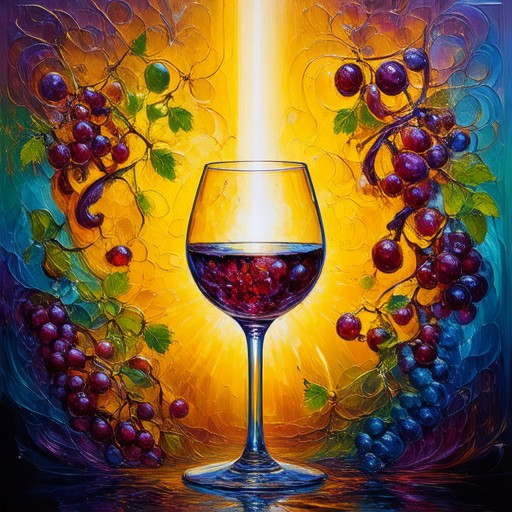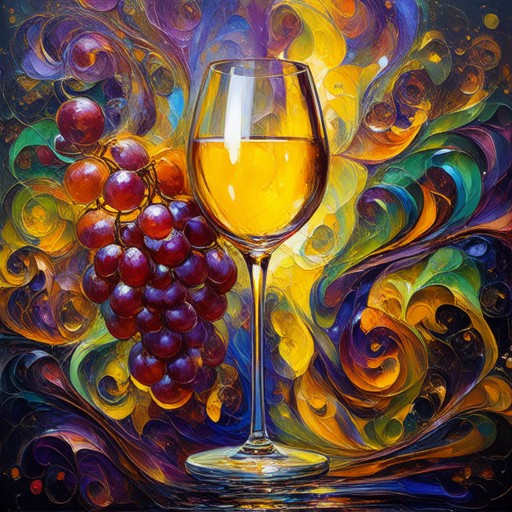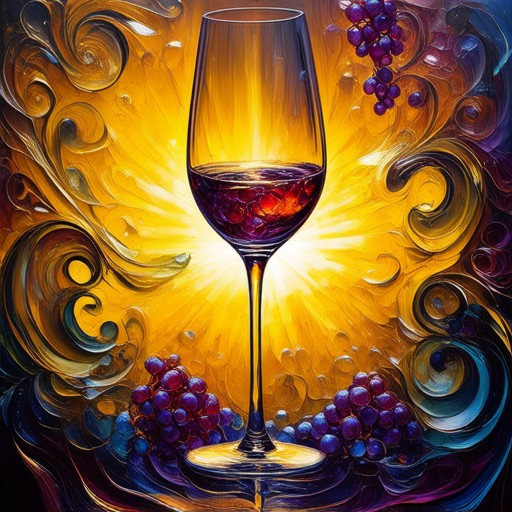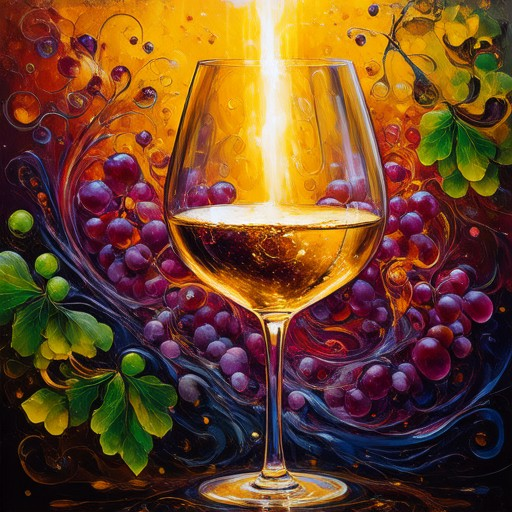Transform your next gathering into an unforgettable wine tasting experience with a blend of blind tasting games and expert hosting tips. Whether you’re an experienced wine connoisseur or new to the world of wine, organizing a wine tasting party can be both fun and educational. From mastering the 5 S’s of wine tasting to setting up the perfect table setup, this guide offers everything you need to host a memorable event. Discover how blind tasting games can add an element of surprise and excitement, while learning the essential steps to ensure your wine tasting party runs smoothly. With the right approach, your guests will not only enjoy the flavors but also the ambiance and camaraderie of a well-hosted wine tasting party.
Key Takeaways
- Blind Tasting Games Add Fun: Engage guests with interactive activities that elevate the experience.
- Curated Wine Selection Showcases Diversity: Highlight a range of wines to cater to various tastes.
- Sommelier Enhances Experience: Professional guidance adds expertise and enriches the event.
- Themed Parties Stand Out: Unique themes create memorable and focused events.
- Pairing Foods with Wines Elevates Tasting: Complementary foods enhance flavor exploration.
- Setup and Logistics Ensure Smooth Operation: Proper preparation guarantees a well-organized event.
- Engagement Activities Keep Guests Entertained: Interactive elements maintain interest and enjoyment.
- Proper Etiquette Makes the Event Polished: Respectful conduct ensures comfort and professionalism.

How to Make Wine Tastings Fun
To make wine tastings an unforgettable experience, consider the following tips:
1. Prepare Thoroughly
- Learn the Basics: Familiarize yourself with wine regions, grape varieties, and tasting techniques to add depth to your presentation.
- Set the Mood: Create a relaxed and inviting atmosphere with soft music, dim lighting, and comfortable seating arrangements.
- Plan the Menu: Select a variety of wines from different regions and pair them with complementary foods like artisanal cheeses, cured meats, and chocolates.
2. Engage the Group
- Blind Tasting Games: Organize a blind tasting where participants guess the wine’s origin, grape type, and flavor profile based on visual, olfactory, and palatable cues.
- Wine Trivia: Introduce fun trivia questions about wine history, famous vintners, and unique facts to test knowledge and spark conversations.
- Sommelier Guidance: Hire or designate a knowledgeable sommelier to lead the tasting, providing insights into each wine’s character and food pairings.
3. Add Interactive Elements
- Group Discussions: Encourage guests to share their observations and preferences, fostering a collaborative and inclusive environment.
- Wine Education: Offer brief tutorials on wine regions, such as comparing Old World and New World styles, to educate and entertain.
- Interactive Activities: Consider a wine-themed game or activity, like labeling regional maps based on tasted wines, to enhance engagement.
4. Diversify the Experience
- Regional Exploration: Feature wines from various appellations to highlight terroir differences and global wine diversity.
- Include Dessert Wines: Conclude the tasting with sweet wines like Sauternes or Icewine to satisfy sugar cravings and extend the experience.
- Sparkling Wines: Start or intersperse sparkling wines to add bubbles and excitement to the event.
5. Conclusion
- End on a Sweet Note: Wrap up with a dessert wine or a digestif to encourage relaxation and continued conversation.
- Professional Setup: Use elegant glassware, proper table settings, and thoughtful decoration to elevate the event’s ambiance.
- Encourage Socializing: Allow ample time for mingling and networking, ensuring guests feel comfortable and engaged.
By combining education, interaction, and a touch of creativity, you can transform a simple wine tasting into an unforgettable experience.
The 5 S’s of Wine Tasting
The 5 S’s of wine tasting are a fun and easy way to remember the essential steps involved in evaluating and enjoying wine. Here’s a breakdown of each step:
- Sniff : Begin by gently sniffing the wine. Take a deep breath in through your nose, allowing the aroma to enter your senses. Note the bouquet (the scent of the wine) and the nose (the initial aromatic impressions).
- Swirl : Once you’ve sniffed, take a moment to swirl the wine in the glass. This motion aerates the wine, bringing more of its aromas to the surface and helping release any trapped smells.
- Sip : After swirling, take a small sip of wine. Taste it slowly, letting it coat your tongue and mouth. Pay attention to the flavor profile, including any notes of fruit, spice, or other characteristics.
- Spit : If you’re not planning to keep the wine (perhaps you’re in a tasting session), you can spit it out after sipping. This helps prevent the wine from becoming too warm in your mouth and allows you to move on to the next sample.
- Slurp : Finally, if you enjoy the wine, take a quick gulp through your nose, making the characteristic “slurp” sound. This method helps aerate the wine further and can enhance the sensory experience.
By following these steps, you can systematically explore the nuances of any wine you taste, from its aroma to its finish.

What Are the 4 S’s in Wine Tasting?
The four S’s in wine tasting are essential steps that help in evaluating and enjoying wine. Here they are:
- Swirl : Begin by swirling the wine in the glass to observe its movement and color.
- Sniff : Take a deep sniff to detect the aroma and bouquet of the wine.
- Sip : After swirling, take a small sip to taste the wine’s flavor and texture.
- Spit : Spit the wine after tasting to prepare for the next sip or to save space in your mouth.
These steps allow you to fully appreciate the wine’s characteristics and enjoy it properly.

How to Host a Tasting Party
Hosting a tasting party is a fantastic way to enjoy fine wines with friends. Here’s a step-by-step guide to throwing an unforgettable event:
1. Choose a Theme
Decide on a theme to give your event a unique touch. Options include:
- Region-based tastings (e.g., Bordeaux, Napa Valley)
- Style-based tastings (e.g., Sparkling, Red Wines)
- Blend-it-yourself sessions
2. Send Invitations
Invite your guests with a personalized note. Include details like date, time, and dress code. Consider:
- Creating elegant digital invitations
- Providing directions to your venue
- Including a RSVP deadline
3. Prepare the Venue
Set the stage for an enjoyable experience by preparing:
- A dedicated space for tasting
- Wine glasses, bottles, and accessories
- Tables, chairs, and lighting
- Snacks or small plates for pairing
4. Select the Wines
Curate a diverse selection of wines to showcase their unique characteristics. Consider:
- Representatives from different grape varieties
- Age-worthy wines for cellaring discussions
- Regional specialties
- Sparkling wines for bubbles
5. Plan Wine Pairings
Enhance the experience by pairing wines with complementary foods. Try:
- Charcuterie platters
- Cheese selections
- Light appetizers
- Dessert wines
6. Organize Activities
Keep guests engaged with fun activities. Ideas include:
- Wine tasting games
- blind wine tasting exercises
- Live music or a sommelier-led discussion
7. Conclusion and Cleanup
End the event on a high note with thank-you notes and feedback collection. Clean up by:
- Collecting empty bottles
- Wiping down surfaces
- Thanking guests for attending
By following these steps, you’ll host a sophisticated and memorable tasting party that your guests will always remember.
How to Set Up a Wine Tasting Table
To host an unforgettable wine tasting event, follow these organized steps to create a seamless and engaging experience for your guests:
Preparation
- Tools and Materials: Gather decanters, glassware (including wine and water glasses), place settings, napkins, and a spittoon. Ensure you have enough supplies for the number of attendees.
- Welcome Note: Place a welcome sign or note at each setting, welcoming guests and outlining the event schedule.
- Timing: Plan your event timeline, allowing for setup, greeting guests, and transitioning between wine tastings.
Layout
- Table Placement: Choose a central location with good lighting and ventilation. Ensure the table is large enough to accommodate all place settings.
- Wine Arrangement: Organize wines by region or grape variety. Consider using labeled placeholders or signs for each wine.
- Glassware Placement: Position glasses at each setting, leaving space for water and spittoon placement.
- Atmosphere: Enhance the ambiance with dim lighting, soft music, and decorative elements like candles or art.
Wine Service
- Wine Presentation: Open each bottle ahead of time and pour small amounts into already-set glasses. Provide guests with clean, dry glasses.
- Wine Descriptions: Offer detailed descriptions of each wine, including aroma, flavor profile, and pairing suggestions.
- Pouring Amounts: Pour approximately 1-2 ounces per glass, depending on the wine’s body and alcohol content.
- Food Pairings: Arrange light bites or charcuterie to complement the wines. Encourage guests to try pairings that enhance flavor notes.
Etiquette
- Engagement: Encourage guests to ask questions and share their thoughts during tastings.
- Respectful Pouring: Never pour more than a guest can reasonably consume. Offer refills upon request.
- Spittoon Usage: Place spittoons in a discrete area to allow guests to taste without overindulging. Provide water glasses for hydration.
- Feedback: After each tasting, invite guests to rate the wine on a scale of 1-5 or leave written comments.
Cleanup
- Trash Management: Set up a trash bin or recycling container nearby for discarded wine bottles and napkins.
- Bottle Collection: Collect empty bottles for proper disposal or consider offering them as takeaways.
- Table Reset: Rereset the table to its original state after the event, ensuring all glasses and accessories are washed and stored properly.
Final Touches
- Guest Thank-You: At the end of the event, thank guests for attending and express gratitude for their participation.
By following these guidelines, you can create a sophisticated and enjoyable wine tasting experience that leaves lasting impressions on your guests. For more expert tips and wine pairing recommendations, explore our wine tasting guides .

What is a Wine Tasting Host Called?
A wine tasting host is commonly referred to as a sommelier . This professional plays a crucial role in guiding participants through the sensory experience of fine wines. The sommelier introduces each wine, sharing details about its origin, flavor profile, and food pairings. They also educate attendees on proper wine appreciation techniques, such as swirling, sniffing, and sipping to enhance the tasting experience.
During a wine tasting event, the sommelier may lead discussions, answer questions, and ensure guests feel comfortable exploring the wines. Their role varies depending on the event size and setting, but their expertise is always central to making the experience enjoyable and educational.
In summary, a wine tasting host is known as a sommelier, whose expertise enhances the event and helps participants connect with the wines on offer.



0 Comments